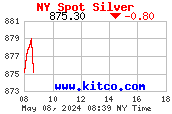Introduction Over time, technical analysts have developed a wide range of methods and tools to help them in their work. These include trend lines, support and resistance levels, chart formations and mathematical indicators such as moving averages, MACD and stochastics. Other studies include Fibonacci projections, Elliot waves and Japanese candlesticks.
For a currency trader, it is important to understand that, by and large, these methods and tools were developed for use in the stock market. The principal point to note here is that a stock is a financial instrument representing the price of a single underlying entity, and a change in a stock’s price reflects a change in the perceived value of the underlying entity. The same applies to commodities, bonds and most other types of investments. However, currencies are different. A currency rate represents the value of one currency in relation to another. As a result, a change in a currency rate can reflect a change in one, the other or both of the underlying currencies. This presents currency traders with an opportunity to add a powerful filtering method, known as relative-strength analysis, to their existing technical-analysis arsenal.
Relative Strength Analysis To determine the relative strength of a currency, it is necessary to detect whether the currency is bullish or bearish against a basket of other currencies. If we discover that the currency is predominantly bullish against a basket of other currencies, we will have gained valuable knowledge about current market sentiment towards that currency. As speculators, we can apply this knowledge towards buying or selling the currency against any other individual currency.
How to Select Trades Using Relative-Strength Analysis
Let’s say you have done a relative-strength analysis on a basket of currencies and you have found that the GBP is rising in value with the greatest momentum. What can you do with this information? Clearly, if you are a trend follower, you will be looking to buy the GBP against another currency. But which one? To determine the ideal match, go back to your analysis and find out which currency among the basket of currencies is falling with the greatest momentum. Let’s say it is the JPY. Based on this relative-strength analysis, the trade with the highest potential to succeed would be a long GBPJPY. In going long the GBPJPY, you would be buying the GBP, which is the currency showing the most strength, and selling the JPY, which is the currency showing the most weakness. Please read more on trading model page.

